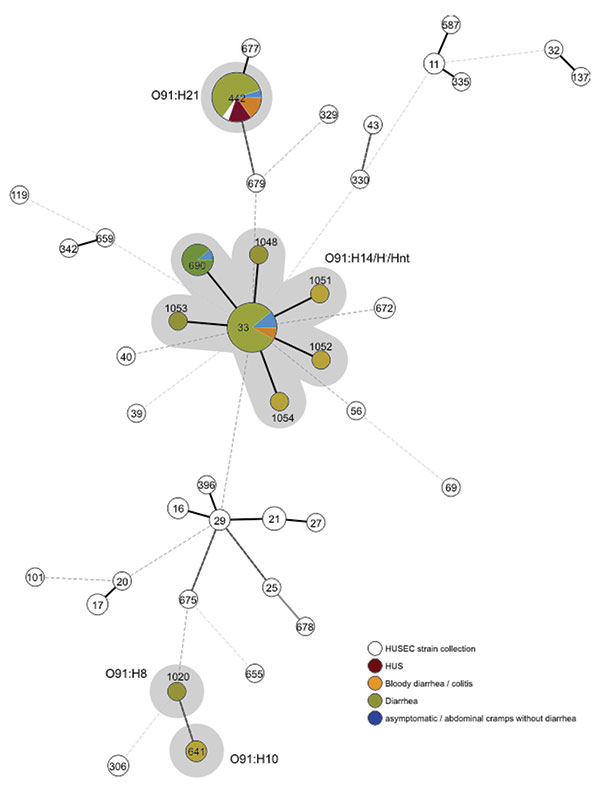Volume 15, Number 9—September 2009
Dispatch
Phylogeny and Disease Association of Shiga Toxin–producing Escherichia coli O91
Figure

Figure. Minimum spanning tree based on the multilocus sequence typing allelic profiles portraying the clonal distribution of the 100 Escherichia coli O91:H8/H10/H14/H21/H–/Hnt isolates (highlighted in gray) associated with different diseases in relation to the hemolytic uremic syndrome–associated enterohemorrhagic E. coli collection. Each dot represents a given sequence type, and the size of each circle is proportional to the number of strains analyzed. Connecting lines show the number of identical alleles between 2 STs (thick black line, 6 of 7 alleles identical; thick gray line, 5 alleles identical; thick dashed line, 4 alleles identical; thin dashed lines of increasing length, <3 alleles identical).
Page created: December 07, 2010
Page updated: December 07, 2010
Page reviewed: December 07, 2010
The conclusions, findings, and opinions expressed by authors contributing to this journal do not necessarily reflect the official position of the U.S. Department of Health and Human Services, the Public Health Service, the Centers for Disease Control and Prevention, or the authors' affiliated institutions. Use of trade names is for identification only and does not imply endorsement by any of the groups named above.